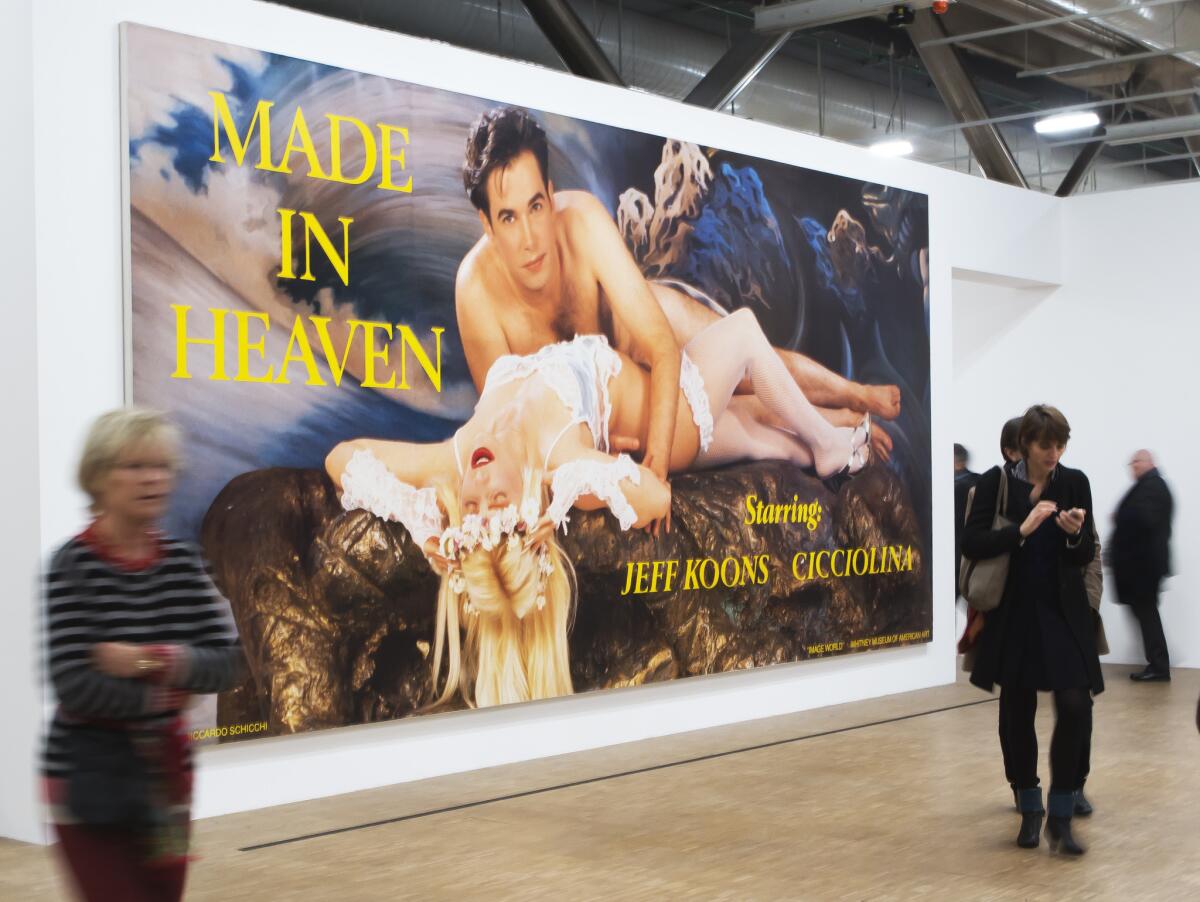Roundup: Koons in France, a museum in El Segundo, an art hall in Pomona

An investigation into the ways in which the wealthy use art foundations to house their collections tax-free ... the less-than-transparent art acquisition process at the National Gallery of Art ... a summary of how the Jeff Koons retrospective is doing in France ... and lots of follow-up on Stefan Simchowitz, the collector and speculator the art world loves to hate. Also: a new tomb in Egypt ... an invaluable photographic archive of U.S. cities at the Library of Congress ... a quirky museum in El Segundo ... and a graceful new art building at Pomona College.
Itâs all in the Roundup:
â Letâs start with the rich and their art: wealthy collectors can gain untold tax benefits from establishing a private foundation for their art collections â even if those collections are barely accessible to the public.
â The National Gallery of Art is currently combing through the collection of the defunct Corcoran Gallery for works it will accept into its permanent collection. But the process, say critics, is way too secretive.
â A report released by the Assn. of Art Museum Directors shows that museums make only a quarter of their revenue from visitors (including admission, parking, dining and other services). This is a good argument for keeping them free.
â Photographer Camilo Jose Vergara, who has chronicled the changing landscape of American cities over four decades, is placing his photographic archive with the Library of Congress. Want a preview? Hereâs the changing view of 10828 S. Avalon Blvd. here in Los Angeles.
â ARTnews gathers critical reactions to the French sojourn of the Jeff Koons retrospective, which was previously at the Whitney Museum.
â The story behind how the El Segundo Museum of Art came to be â and how the current show cheekily examines what will look good over the couch.
â A roughly 4,500-year-old tomb of a previously unknown queen has been discovered in Abu Sir, Egypt â a find that could reveal precious information about the dynasties that built some of the first pyramids.
â Critic Ben Davis looks at how the gentrification of urban centers may lead artists to head for the âburbs.
â Plus, so much Stefan Simchowitz, so little time: New York Times Magazine writer Christopher Glazek has annotated his story on the notorious L.A. art speculator with additional facts and observations, New York Magazine critic Jerry Saltz parses Simchowitzâs various online rants, and Marion Maneker parses it all in Hyperallergic, stating that âStefan Simchowitz isnât as controversial as heâd like you to believe.â
â Arts writer Matt Stromberg provides us with an invaluable history of L.A.âs Eugenia Butler Gallery over at KCET, which supported all kinds of experimental and ephemeral works during the late 1960s and early â70s. The space gave key early shows to conceptual artists such as Allen Ruppersberg, Eric Orr, John Baldessari, Dieter Roth, Richard Jackson and countless others. A good piece of Los Angeles history!
â How artists went from being artisans to artistic geniuses to industry professionals: âItâs hard to believe that the new arrangement will not favor work thatâs safer: more familiar, formulaic, user-friendly, eager to please â more like entertainment, less like art.â
â Plus, Ashton Cooper examines the trope of the âoverlookedâ female artist who is ârediscoveredâ late in life.
â The Museum of Modern Artâs Design and Violence blog has a fascinating piece about how some designers are figuring out ingenious ways to reach victims of trafficking.
â âImagine a piece of writing in all caps but small type, or the Sex Pistols played at extremely low volume.â Times architecture critic Christopher Hawthorne takes a look at wHY architectureâs new Studio Art Hall at Pomona College.
â Chicago is working hard to make sure that Obamaâs Presidential Library ends up there.
â A 176-lb. chunk of concrete fell off the facade of a year-old building designed by Zaha Hadid in Vienna. (Architect)
â An interesting case about intellectual property rights: The filmmakers behind âSelmaâ made a movie about Martin Luther King without actually quoting any of his speeches, since the rights to those belong to his famously fractious children.
â Get your bidding on: Online art auction site Paddle8 will sell the only copy of the Wu-Tang Clanâs fabled âThe Wu: Once Upon a Time in Shaolin.â The album is being treated as a one-off work of art.
â This should be surreal: Haruki Murakami, advice columnist.
â Last but not least: Kids read John Waterâs G-rated version âPink Flamingos.â YES.
Find me on Twitter @cmonstah.
More to Read
The biggest entertainment stories
Get our big stories about Hollywood, film, television, music, arts, culture and more right in your inbox as soon as they publish.
You may occasionally receive promotional content from the Los Angeles Times.











